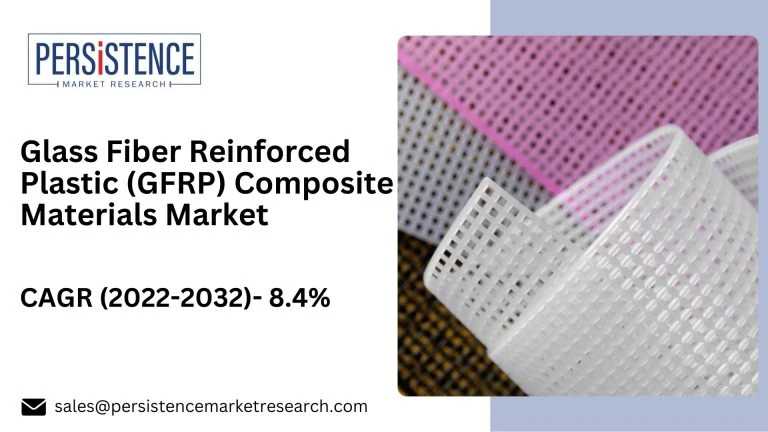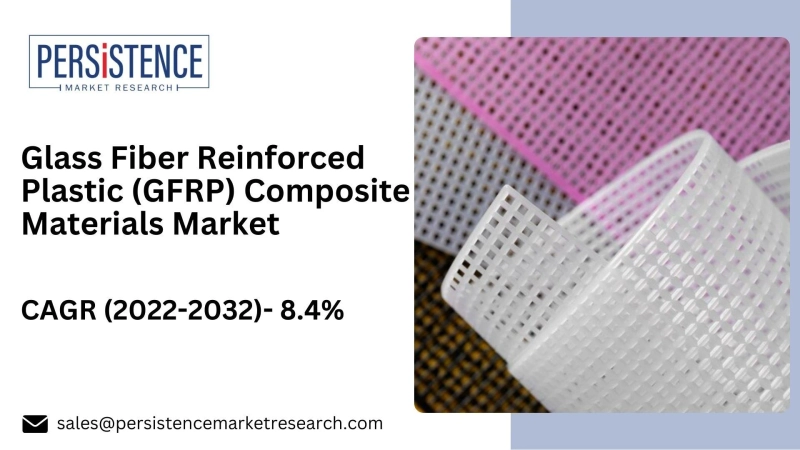
About the Market
Advanced Manufacturing Techniques
Automated Fiber Placement (AFP):
- Overview: Automated Fiber Placement is a manufacturing technology that uses robotic systems to precisely lay down continuous fiber tapes in a predetermined pattern. This technique allows for the production of complex composite structures with high accuracy and efficiency.
- Benefits: AFP improves the consistency and quality of GFRP composites, reduces manufacturing time, and lowers labor costs. It also enables the creation of intricate geometries and tailored mechanical properties.
Resin Transfer Molding (RTM):
- Overview: RTM involves injecting resin into a closed mold containing dry fiber preforms. The resin is cured within the mold to form the final composite part.
- Benefits: RTM offers high-quality surface finishes, excellent dimensional accuracy, and the ability to produce large, complex parts. It also supports faster production cycles and reduced material waste compared to traditional methods.
Pultrusion:
- Overview: Pultrusion is a continuous manufacturing process where fiber reinforcements are pulled through a resin bath and then cured in a heated die to form composite profiles.
- Benefits: Pultrusion is ideal for producing long, uniform composite shapes such as beams, rods, and panels. It provides high strength-to-weight ratios and consistent material properties.
3D Printing of Composites:
- Overview: Additive manufacturing, or 3D printing, is increasingly being used to create GFRP composite parts. This technology involves building up layers of composite material to form complex shapes.
- Benefits: 3D printing allows for rapid prototyping, customization, and the creation of complex geometries that are difficult to achieve with traditional methods. It also enables on-demand production and reduces material waste.
Innovations in Resin Systems
Bio-based Resins:
- Overview: Bio-based resins are derived from renewable resources such as plant oils and agricultural by-products. These resins offer a more sustainable alternative to traditional petroleum-based resins.
- Benefits: Bio-based resins reduce the environmental impact of GFRP composites by decreasing reliance on non-renewable resources and lowering carbon emissions. They also align with growing sustainability trends.
High-Performance Thermosetting Resins:
- Overview: Advances in thermosetting resins, such as epoxy and vinyl ester, have improved the thermal and chemical resistance of GFRP composites.
- Benefits: Enhanced thermal stability and chemical resistance extend the service life of GFRP composites in demanding environments. These resins also offer improved mechanical properties and durability.
Self-Healing Resins:
- Overview: Self-healing resins contain microcapsules or embedded healing agents that activate when the composite is damaged. These agents repair cracks and restore material properties.
- Benefits: Self-healing resins enhance the longevity and reliability of GFRP composites by autonomously addressing damage and reducing maintenance needs.
Innovations in Fiber Reinforcements
Hybrid Fiber Reinforcements:
- Overview: Hybrid composites incorporate multiple types of fibers, such as glass and carbon, to combine their respective strengths. This approach can enhance performance characteristics, such as stiffness and impact resistance.
- Benefits: Hybrid fiber reinforcements offer tailored properties for specific applications, allowing for optimized performance and reduced material costs.
Nanotechnology:
- Overview: Nanotechnology involves incorporating nanoscale materials, such as carbon nanotubes or nanoparticles, into the resin or fiber matrix. These nanomaterials can significantly improve the mechanical, thermal, and electrical properties of GFRP composites.
- Benefits: Nanotechnology enhances the strength, stiffness, and durability of GFRP composites while potentially reducing weight. It also opens up new possibilities for advanced applications, such as smart materials.
Sustainable Developments
Recycling and Circular Economy:
- Overview: Efforts are underway to develop efficient recycling methods for GFRP composites, including mechanical grinding, chemical recycling, and energy recovery.
- Benefits: Improved recycling technologies contribute to a circular economy by reducing waste and promoting the reuse of materials. This aligns with global sustainability goals and helps mitigate the environmental impact of composite materials.
Green Manufacturing Processes:
- Overview: Green manufacturing processes aim to reduce the environmental footprint of composite production by minimizing energy consumption, reducing emissions, and using environmentally friendly materials.
- Benefits: Sustainable manufacturing practices enhance the overall environmental performance of GFRP composites and support corporate social responsibility initiatives.
Emerging Applications
Urban Air Mobility (UAM):
- Overview: GFRP composites are being explored for use in urban air mobility vehicles, such as electric vertical takeoff and landing (eVTOL) aircraft. The lightweight and high-strength properties are crucial for enhancing flight efficiency and performance.
- Benefits: The application of GFRP composites in UAM vehicles supports the development of next-generation transportation solutions and contributes to reduced energy consumption and emissions.
Smart Materials:
- Overview: The integration of sensors and actuators into GFRP composites enables the creation of smart materials that can monitor and respond to environmental changes.
- Benefits: Smart GFRP composites offer advanced capabilities, such as self-monitoring, adaptive performance, and real-time data collection, enhancing their functionality in various applications.
Medical Devices:
- Overview: Innovations in GFRP composites are being applied to medical devices, including prosthetics and implants. The materials\' strength-to-weight ratio and biocompatibility are advantageous for medical applications.
- Benefits: GFRP composites in medical devices provide improved patient outcomes, enhanced device performance, and greater comfort.
Conclusion
The GFRP composite materials market is undergoing significant transformation due to emerging technologies and innovations. Advanced manufacturing techniques, innovative resin systems, and fiber reinforcement technologies are enhancing the performance and applications of GFRP composites. Additionally, sustainable developments and emerging applications are driving the growth of the market, aligning with global trends in sustainability and advanced technology. As these innovations continue to evolve, the GFRP composites market is poised for further expansion and new opportunities in various industries.



